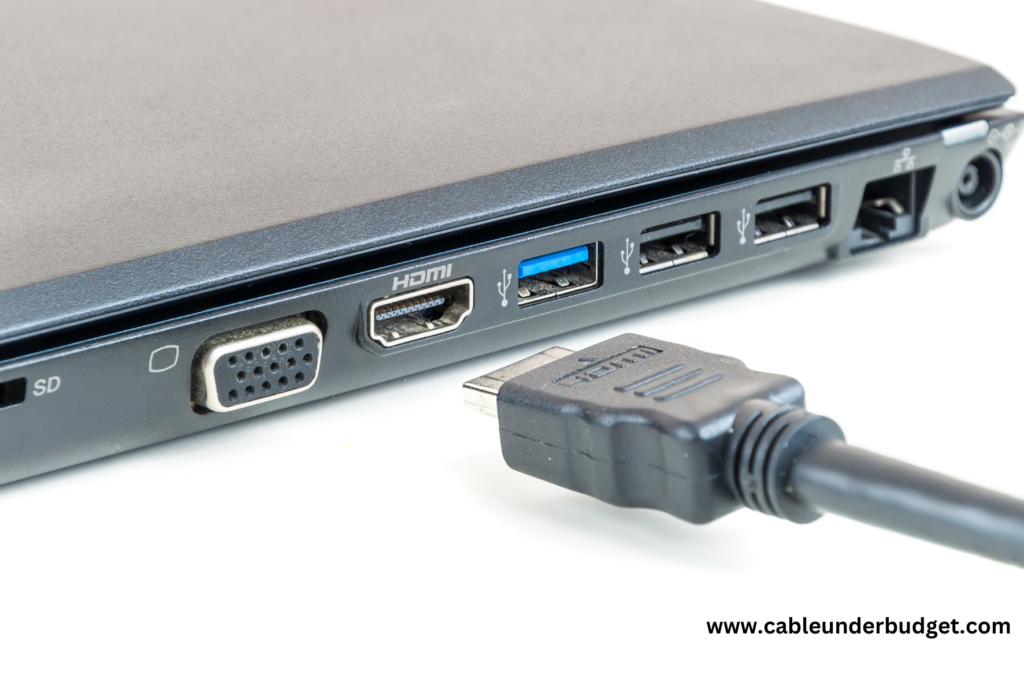Contents
- 1 How to Connect Laptop to TV via HDMI Cable
- 2 Understanding HDMI Technology:
- 3 What is HDMI?
- 4 Benefits of HDMI:
- 5 Preparing Your Devices:
- 6 Connecting Your Laptop to Your TV with HDMI:
- 7 Troubleshooting Tips:
- 8 Conclusion:
- 9 FAQs (Frequently Asked Questions):
- 9.1 How do I know if my laptop has an HDMI port?
- 9.2 Is it possible to connect a MacBook to a TV via HDMI?
- 9.3 Can I connect my laptop to an older TV without HDMI?
- 9.4 Why is there no sound coming from my TV after connecting my laptop via HDMI?
- 9.5 What should I do if my laptop screen doesn’t appear on the TV after connecting?
- 9.6 How many HDMI ports does a typical TV have?
How to Connect Laptop to TV via HDMI Cable
Connecting your laptop to your TV via HDMI has become a popular method for enhancing the viewing experience. Whether you want to stream movies, share presentations, or play games, HDMI connectivity offers a straightforward solution. This guide provides easy-to-follow steps on how to connect your laptop to your TV using an HDMI cable, ensuring hassle-free connectivity for users of all levels.
Understanding HDMI Technology:
Before we proceed, let’s briefly understand HDMI technology and its significance in multimedia connectivity.

What is HDMI?
HDMI, or High Definition Multimedia Interface, is a standard interface used for transmitting high-quality video and audio signals between devices. It simplifies the connection process and ensures superior audiovisual performance.
Benefits of HDMI:
- High-Quality Transmission: HDMI delivers uncompressed, high-definition video and audio signals, resulting in superior picture and sound quality.
- Plug-and-Play Convenience: Connecting devices via HDMI is as simple as plugging in a cable, eliminating the need for complex setup procedures.
- Universal Compatibility: HDMI is widely supported across various devices, including laptops, TVs, gaming consoles, and Blu-ray players, making it a versatile connectivity option.
Preparing Your Devices:
Before proceeding with the connection process, ensure that both your laptop and TV are ready for setup.
Check Your Ports:
Verify that both your laptop and TV have HDMI ports. These ports are typically located on the sides or backs of the devices and are labeled accordingly.

Power Off Your Devices:
Before making any connections, power off both your laptop and TV to prevent potential damage to the devices or ports.
Connecting Your Laptop to Your TV with HDMI:
Now that your devices are prepared, let’s proceed with connecting your laptop to your TV via HDMI.
Step 1: Connect the HDMI Cable:
Start by connecting one end of the HDMI cable to the HDMI port on your laptop. Ensure a secure connection to avoid signal loss or interruptions.
Step 2: Connect the Other End of the HDMI Cable:
Next, connect the other end of the HDMI cable to the HDMI port on your TV. Ensure the connection is secure to maintain a stable signal transmission.

Step 3: Configure Display Settings:
Navigate to your laptop’s display settings and select the option to extend or duplicate the display to your TV. Adjust the resolution and refresh rate settings as needed for the best viewing experience.
Step 4: Configure Audio Output:
In addition to video, configure the audio output settings on your laptop to route sound to your TV speakers. Select the HDMI audio output option for seamless audio playback.
Step 5: Play Test Content:
Launch a video or multimedia content on your laptop and verify that it’s displayed on your TV screen. Ensure that the audio is also playing through the TV speakers for a complete viewing experience.
Troubleshooting Tips:
- Check Cable Connections: Ensure all HDMI cable connections are secure and properly seated.
- Restart Devices: Power cycle both your laptop and TV by turning them off and on again.
- Update Drivers: Ensure your laptop’s graphics drivers are up to date to support HDMI output.
- Try Different HDMI Port: If possible, try connecting to a different HDMI port on your TV to rule out port issues.
Conclusion:
By following these simple steps, you can easily connect your laptop to your TV via HDMI and enjoy your favorite content on a larger screen. Whether you’re streaming movies, giving presentations, or gaming, HDMI connectivity offers a convenient and immersive viewing experience for users of all levels.
FAQs (Frequently Asked Questions):
How do I know if my laptop has an HDMI port?
Is it possible to connect a MacBook to a TV via HDMI?
Can I connect my laptop to an older TV without HDMI?
Why is there no sound coming from my TV after connecting my laptop via HDMI?
What should I do if my laptop screen doesn’t appear on the TV after connecting?
How many HDMI ports does a typical TV have?
